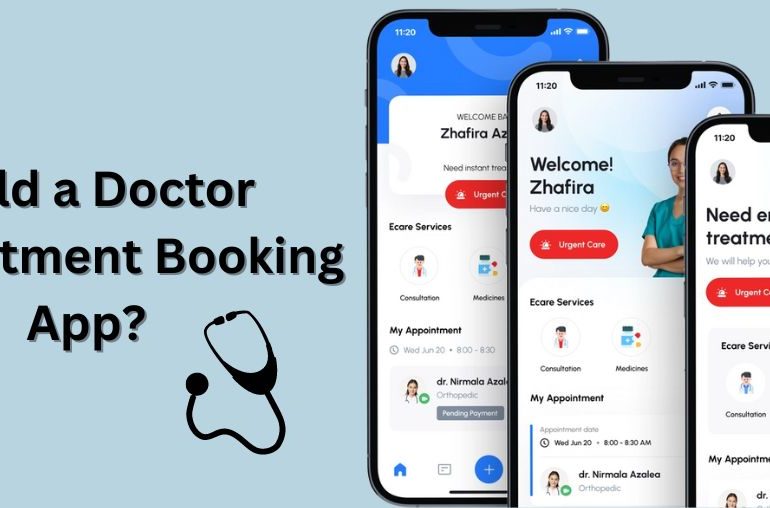Last Updated on March 11, 2022
What Is An API And Why Is It Important?
Have you ever wondered that how do two applications communicate with each other? Application Programming Interface or API is the intermediary software that establishes communication between two different applications. It allows developers to access an app’s library having all its existing code information using a key. When some information is requested, it is termed “API call” and when the API returns the information, it is termed “response.”
Like any other communication, the applications’ communication should be secure and private. APIs thus are designed to match the utmost levels of security. However, APIs give an insight about the coding and other details only and there is no way that an API can give complete access.
Example: All leading tech giants like Google, Facebook, etc., are building their applications using API and further offering these pieces of code to multiple developers. For example, developers can use Google API to create customized maps as required in their software.
Importance Of APIs For businesses
For all businesses relying on software for their seamless operations, APIs come with a plethora of benefits. It is crucial to know about the importance of APIS as much vertical software doesn’t offer dedicated API and hence businesses have to invest in these externally. The main benefits of APIs are not limited to smooth operations, quick development, and time savings. If you think that the creation of API keeps specific business needs in mind only, think again as these powerful pieces of codes come with some of the following overall benefits:
1. Quick Integration With Other Systems
It is impossible for any business to work in today’s highly competitive and digitally-dependent world without software. This brings a new challenge to the teams that have to bring different software to the same page. APIs offer a lending hand when it comes to quickly integrate with other systems.
APIs are helping multiple businesses to collaborate their accounts, sales, marketing, customer service, and other software.
2. Controlled Features
Businesses may have well-designed and creatively drafted programs for different corporate functions. However, it is observed that the efficiency of the business software is not the same at all levels. Many times employees may feel difficult to use one or two features of the software that may be a part of their daily work.
It is evident that businesses can’t replace the entire software and can’t leave employees struggling with it. APIs can effectively introduce the small features that can improve the software functionality when training is not helpful to the teams. Hence, offers better control to the businesses to manage their software. Further, these APIs can add sufficient customization to the company’s software.
3. Effective Customers And Vendor Engagement
All service companies prefer to engage their customers on the system software to ensure a high-end customer experience. Further, with a well-written API, it is easy and quick to extend the portions of the software to customers who can enjoy the benefits of the technology. APIs are helping multiple businesses design dedicated customer portals that offer clear information about their memberships and other details.
When it comes to vendor management, APIs can offer dedicated solutions. All small updates and changes can be best-taken care of by these APIs only. Hence, effectively reduces the heavy fortunes for new software expenditure.
Types Of Application Programming Interface (API)
Multiple APIs are available in the markets that have the potential to satisfy open and highly-customized development needs. Based on the scope of use of APIs, these can be classified into four types. This classification helps developers find an ideal product according to their development needs.
1. Private APIs
Also termed as internal APIs, these can be used within an organization only. These are ideal to connect all data and systems of businesses. The best examples include APIs connecting payroll and other HR systems within an organization.
The private APIs have no security needs and hence these come with weak authentication and authorization. The security levels of overall business systems are enough to manage these APIs that work internally only.
2. Partner APIs
As the same suggests, these APIs are for business-to-business interactions only. Hence, partner APIs are specific to authorized and specific developers only and are not available to all developers. The best use of partner APIs includes the APIs offering access to customer data to external CRM firms. Hence, these are authorized access with no external API use. All these APIs are available to license holders only. Compared to all APIs, partner APIs have high levels of authentication, security mechanism, and authorization.
3. Public APIs
These APIs are open and hence can be used by any developer. Hence, many businesses looking to offer API for development purposes go for offering public APIs only that are available for a wide audience. These APIs work on moderate authorization and authentication. Businesses can earn by monetizing their public APIs and can earn from per-call costs.
4. Composite APIs
These APIs are the combination of two or more types of APIs. This combination of APIs brings great improvement in functions and high levels of optimized performance. Composite APIs dedicatedly satisfy the exclusive requirements of multiple businesses that are not met by a single API independently.

Terminologies, Specifications/Protocols Of API Development
It is crucial to know the API development terminologies. Some of the famous terms associated with APIs are:
a) API Key
These keys are required to make a request to any API. API keys are linked to the user accounts. Without an API key, it is not able to process the request and the user gets an HTTP 403 error. API keys are used to define access levels or authentication to the allowed API user. Businesses use multiple API keys for different integrations.
b) Endpoint
As the name suggests, the end of communication are endpoints. In API communication when these interact with one another, the touchpoints of the API interaction are endpoints. In API’s endpoints is the URL of the service or server. In other words, the point of API ending and resource lives are endpoints. As the main use of endpoint is seamless integration, the performance of any API depends on its communication with API endpoints.
c) JSON
It can be considered as the language used by two APIs to communicate with each other. JSON is machine-readable and human-readable which makes it super easy to understand the data flow between APIs. Thus, it helps developers to understand the API that comes with no independent user interface. JSON makes it easy for APIs to understand requests and share responses. It includes a key that labels the data and the value of the data. An example of JSON block is “serial-number” which indicates the exact serial number of the data line containing a specific number value.
d) GET
It is an HTTP request that asks for a specific resource from the server. GET request helps receive data without any change in it. It is used to send any HTTP headers but can’t send data due to the absence of a message body. Hence, GET requests are widely used in APIs.
e) POST
The POST requests are used to send data to the API server to update or create different resources. All common HTML forms on the internet operate using POST requests only. It allows sending data as a package in separate communication using the processing script. Hence, the data sent through the POST request is not visible in the URL. Hence, offers security in data communication in APIs.
f) OAuth
It is the delegated authorization framework for APIs. It helps apps to obtain limited access to the user’s data without going away with the user’s passwords. Hence, OAuth eliminates the coupled operations of authorization and authentication. It supports multiple use cases with multiple device capabilities.
g) REST
Representational State Transfer or REST is one of the architectural styles that act as the groundwork for API communication. It is the set of constraints or architecture that defines the behavior of internet-scale distributed hypermedia systems.
h) SOAP
Simple Object Access Protocol or SOAP is the messaging protocol specifications for exchanging the structured data in the web services implementation. It allows developers to initiate all processes running on multiple operating systems like Windows, Linux, macOS and uses Extensible Markup Language (XML) to authenticate, authorize, and communicate. Hence, all communications remain independent of platforms and languages.
i) Latency
The API latency is the total time taken by any API system to respond to the call. It starts from the receipt of a request at the API gateway up to the time that the first response is returned to the same user. The main cause of latency is the distance between the devices making requests and servers responding to them.
j) Rate-Limiting
It is the limit to the maximum number of calls that are allowed in a specific time interval. Hence, rate-limiting helps define the network traffic for any API. It prevents API throttling and hence optimizes the API efficiency.
k) API Throttling
It is the server-side response to the rate-limiting. It allows the API to control the resources consumption. Hence, API throttling is defined to prevent API traffic.
Tools For Developing An API
1. Apigee
It comes from tech giant Google and is an API management provider that re-establishes an API integrated approach. Apigee is used by multiple developers and entrepreneurs to lead the digital transformation.
2. APIMatic and API Transformer
Both of these tools offer sophisticated automatic generation tools to create API code snippets and high-quality SDKs. APIMatic and API transformer further helps transform the code snippets and SDKs into specific formats like API Blueprint, RAML, etc.
3. API Science
This is one of the useful tools that help determine the internal and external API’s performance.
4. API Serverless Architecture
It is primarily used by mobile app developers to design, build, publish, and host APIs using cloud-based server infrastructure.
5. API-Platform
It comes as the open-source PHP framework used for web API development.
6. Auth0
It comes as an identity management solution that is helpful to authorize and authenticate multiple APIs.
7. ClearBlade
It is a useful API management provider if developers want to incorporate Internet-of-Things (IoT) technology in the project.
8. GitHub
It is an open-source git repository service that offers dedicated code management. GitHub is useful for managing code files, version controls, commenting; pull requests, etc., across a group and helps save codes in private repositories.
9. Postman
It comes as an API toolchain that enables developers to run, test, document, and evaluate APIs to reach their real-time performance.
10. Swagger
It comes as another framework for API development software and is open-source.
Must-Have Features Of An Efficient API
APIs are found in almost every web or mobile application. Hence, it is easy to get confused in finding or designing one satisfying your requirements. Below are the set of must-to-have features for any efficient API
a) Modification timestamps/Search by criteria
Ideally considered as one of the must-to-have features, any API is incomplete without modification timestamps or search by criteria. It allows the changes like update, edit, or share after the first and initial data synchronization. Further, APIs should enable data-based user search.
b) Pagination
It is another important feature that helps get a glimpse of data change and informs about the pending number of data pages. It helps API to determine the right amounts of data to display in one go and its frequency.
c) Sorting
It enables data sorting based on different features like time ensuring that the end-user can receive all data pages one by one.
d) JSON Support/ REST
JSON support makes it easy for the developers to parse the API to any other language due to its resemblance to the majority of languages. REST APIs are well-known for being light-weighted, stateless, and offer retry features in mobile data upload.
e) Authorization and Authentication
Authentication like OAuth, OAuth2, and JWT. Authorization checks the permission to the user for access while authentication simply verifies the user’s identity.
f) Cache
It is necessary to retrieve resources at a quick speed. Multiple tools enable caching in APIs that further reduce the request costs as data is ready for consumption in the in-memory database.
g) Wrappers
These are the language-specific packages or containers in APIs. It can call multiple APIs without user interaction and hence effectively combines different sets of APIs.
h) HATEOAS
It is one of the popular modules of REST application architecture and stands for “Hypermedia As The Engine Of Application State.” Hypermedia stands for videos, images, text, etc. It helps users to interact with REST API using dynamic responses from the server.
i) Error handling
It is crucial to facilitate debugging process and help understand the type of error, i.e., server or client error. There are multiple methods like the use of well-known standards, a right number of errors, causes, and segregating domain, etc., that can be used in it.
j) Validation
It stands for verifying the data correctness. It can be client-side or server validation.
k) Testing
It is crucial to test APIs using tools like SoapUI, Postman, and JMeter. Hence, helps meet the performance, functionality, reliability, and security of APIs.
Best Practices For Building The Right API
Some of the best and highly recommended practices for building the right API include:
a) Use Throttling
It is important to redirect the traffic overflow, Denial of Service (DoS) safeguarding and helps backup APIs.
b) Consider Your API Gateway As Enforcer
API gateway is the best enforcement point for throttling. It further helps encrypt messages or edit confidential information for managing APIs.
c) Allow Overriding HTTP Method
The custom HTTP Header X-HTTP-Method-Override supports GET and POST methods along with the HTTP method.
d) Evaluate The APIs And Infrastructure
It is crucial to evaluate the APIs and infrastructure to handle any memory issues, CPU, etc.
e) Ensure Security
It is ideal to go for token-based authentication for securing APIs.
f) Documentation
It helps other developers understand the process and utilize app information.
g) SDK And Libraries
The reusable processes and codes by SDK and libraries boost the development speed and API implementation.
How To Start Developing An API/how To Create An API?
It enables data sorting based on different features like time ensuring that the end-
1. Start With Your Goals And Intended Users
Before jumping to API development, it is crucial to define the expected business goals. A specific set of user identification is necessary for creating a matching API.
2. Design The API Architecture
Once requirements are clear, the designing process is started. Multiple tools help in API architecture designing by managing the balance between requirements and trending technologies.
3. Develop Your API
API development is now initiated with the help of the latest tools and technologies. The selection of tools depends on the design and type of APIs.
4. Test Your API
It is important to test API like other software before launching it for users.
5. Monitor Your API And Iterate On Feedback
Rigorous monitoring is necessary to include necessary updates or modifications according to the real-time feedback.
Cost For Developing An API
The total API development cost depends on its type, features, etc. On average, a simple API can be built in around 20,000 USD. It includes secure design, documentation, and fully-featured API development.
If you are searching for an app development company that can implement third-party API integration to your app then Emizentech can help you. Our app developers
Frequently Asked Questions About API Development
An API developer understands the business’ API expectations and converts them into real-time interfaces.
API development is a complex process but can be made easy when designed, developed, tested, and monitored with detailed planning.
API allows interaction between two applications while web services exchange data between systems and applications.
JSON API is an encoding scheme that works seamlessly with HTTP. It stands for JavaScript Object Notation.
REST API is used for data communication and transfer while SOAP API does the same but requires dedicated bandwidths. REST API uses JSON, URL, HTTP, etc., while SOAP API uses HTTP, XML, etc.
To make a good RESTful API, it should work with JSON, use a noun as endpoints, plural nouns as collections, nesting resources for hierarchical objects, etc. It should further handle all errors, allow sorting, pagination, filtering, etc. while maintaining good security practices.
API development cost can be calculated by considering the complexity of API and the time taken by developers in creating these APIs. The use of automation tools and pre-built integration tools can lower these costs.





 USA
USA UK
UK Singapore
Singapore